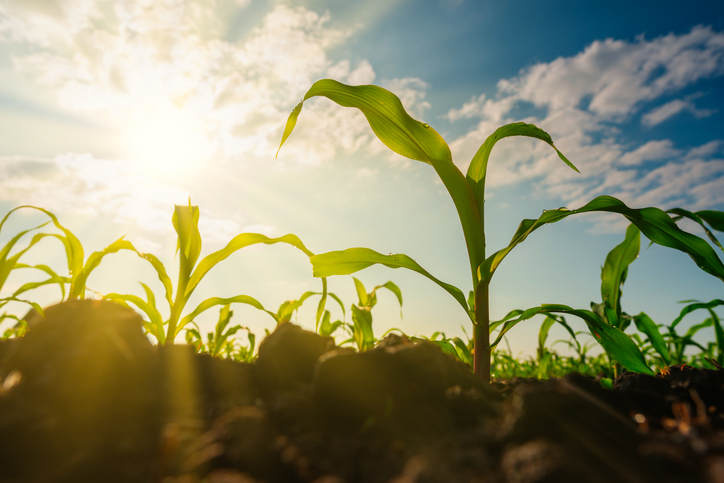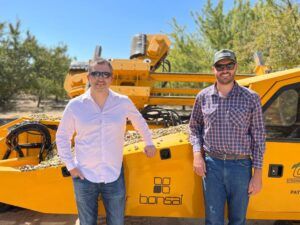Anya Gandy is sustainability lead at Inari, based in Boston, Massachusetts, US.
The views expressed in this guest commentary are the author’s own and do not necessarily reflect those of AFN.
Earth Day 2022’s theme — ‘invest in our planet’ — stands as a stark reminder that our economic security is entirely dependent on the health of our natural world. Earth Day demands that we ask: “What is the real bottom line?”
Rarely in life are we presented with clarity. Climate change is clear.
It is clearly an existential threat to each of us, our families, our communities, and our planet. The fourth great agricultural revolution that we champion must acknowledge our precarity and build a resilient food system.
Realizing this vision requires understanding the ripple effects our investments will have across intertwined agricultural, ecological, geopolitical, and financial systems. We can then optimize these system interactions to generate truly positive returns across natural, human, and then financial capital.
With systemic opportunity analysis, we can marshal the full weight of our collective creativity and pull the most powerful levers of change in the right direction. Dynamic systems modeling developed at MIT is a practical, quantitative tool for companies, startups, investors, and policymakers to assess an investments’ likely ‘impact level’ across multiple dimensions.
We do ourselves a disservice to consider climate change primarily from a “profit risk reduction” angle, as most ESG ratings do. Risk mitigation is a side effect of bold applications of disruptive technology. These technologies can’t simply aim to shore up the current unprepared system we recognize. The opportunity is for an emergent and resilient design.
History abounds, however, with the consequences of well-educated, well-intentioned actions making problems worse – or creating new ones (something nearly all of us have experienced in our own lives.) Put another way: we want our actions to have the power of a wolf reintroduction, without the Cobra Effect.
Additionally, simply achieving a positive impact return is a far cry from achieving the greatest returns. We have a climate change needle to thread; maximizing positive impacts while minimizing consequences is essential.
On Earth Day 2021, Climate Neutral said it signed 230 brands to its net-zero certification – read more here
What investors, startups, companies and policymakers alike are grappling with is how to ensure the impacts of today’s investments are not only positive, but optimized across multiple dimensions. Getting to the bottom of this question requires an understanding of system structures, behavior, and dynamics over time.
What industries across the board have been missing are reliable tools for calculating ‘expected level of impacts.‘ We can calculate a net present value to estimate financial returns, but we have no equivalent way to calculate expected returns on social or environmental metrics. The flawed impact assessment methods relied on today are not only limited – they can be actively harmful. ESG ratings, for example, are fast becoming the latest in greenwishing couture.
At Inari, we are moving beyond standard evaluations that focus on Scope 1 and 2 emissions – typically a very small portion of companies’ total footprint. Instead, we’re leveraging MIT’s dynamic systems modeling in a novel way. Our opportunity analysis will quantify the likely level of impact Inari’s products (seeds) will have across multiple direct and indirect environmental, social, and financial metrics.
In addition to being well-proven, dynamic systems modeling is robust, user-friendly and flexible. It also addresses data uncertainty and is impressively cost-effective. These models can be embedded throughout the business. At Inari, for example, product impact assessments will be incorporated at the very beginning of our product development pipeline. Optimizing natural, human, and financial value creation is a competitive advantage that will only increase as climate change advances.
In action, we input product ideas — such as 10% higher-yielding corn, for instance — and the model simulates likely levels of change across runoff rates, emissions, land use, farmer profit, and so on. The model simultaneously calculates the best products to achieve targets: for example, reducing nitrous oxide emissions by 15%. These simulations capture complex system effects like counterintuitive feedback and feedforward loops that ultimately determine rate and level of ‘impacts’ over time.
We have the capacity for great change – as individuals, as an industry, and as a society. Forests, soils, and crops run on slower clocks than eyeblink stock trades, leveraged advantages, and metropolitan night lives. Yet the agricultural system changes we seed today for a climate-changing world will determine whether our future has clean air, drinkable water, and healthy harvests. These changes will ripple far past fence lines to Wall Street boardrooms and Main Street tables.
It is long past time to invest in people, ideas, and inventions that enrich our lives for the long term. Who better to lead an enriching movement than the agricultural community: a community that understands connection to land and animal, to generations past, present, and future, through shared calling, shared homestead, and shared Earth.
There is richness in dark, thick, and fertile topsoil. Richness in stable communities. Richness in security across social strata. Richness in balanced ecological, agricultural, and financial systems.
This is the vision that rallies my Millennial generation and the generations that follow to take the leap into growing our world’s food.




